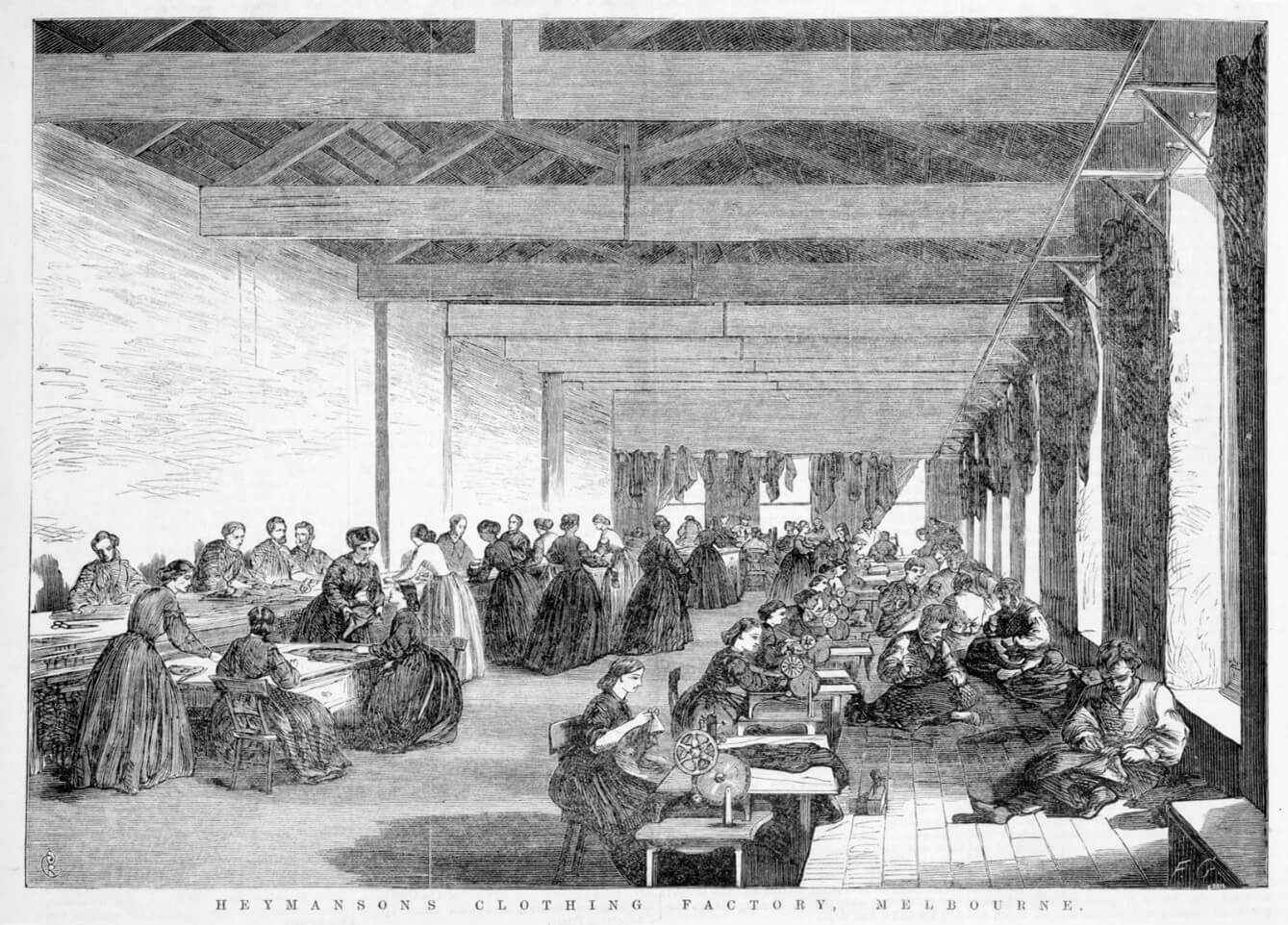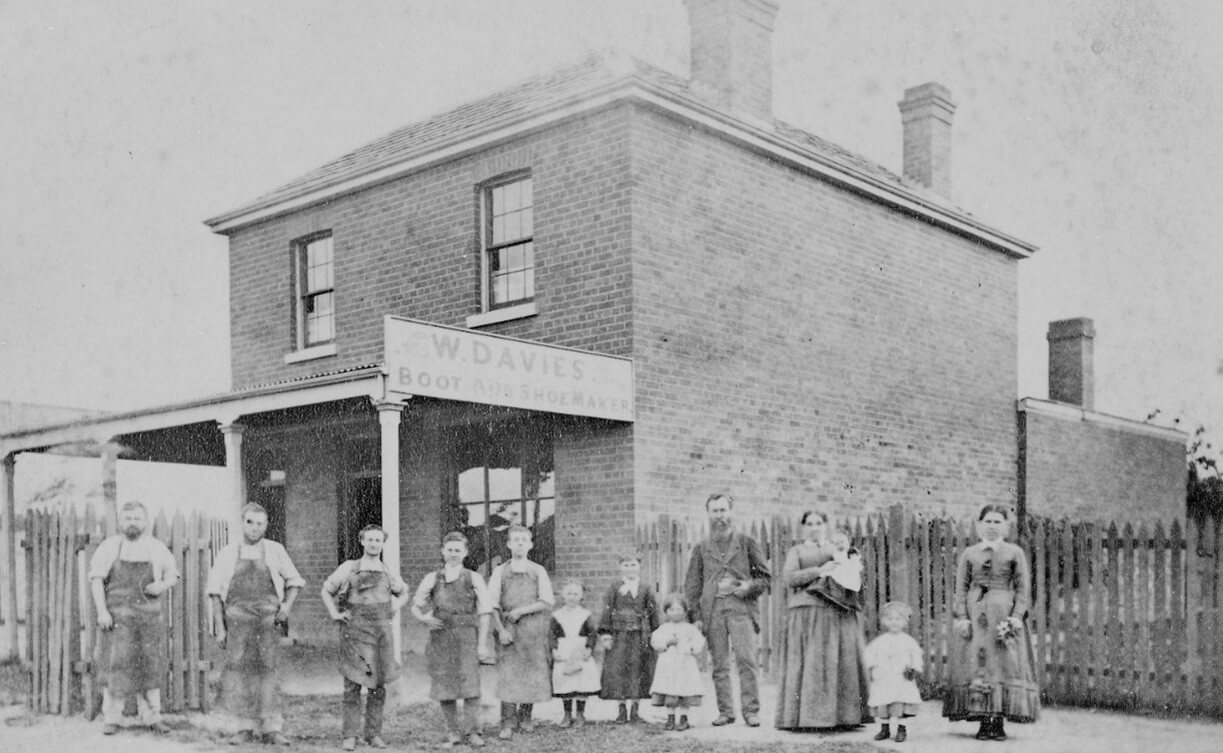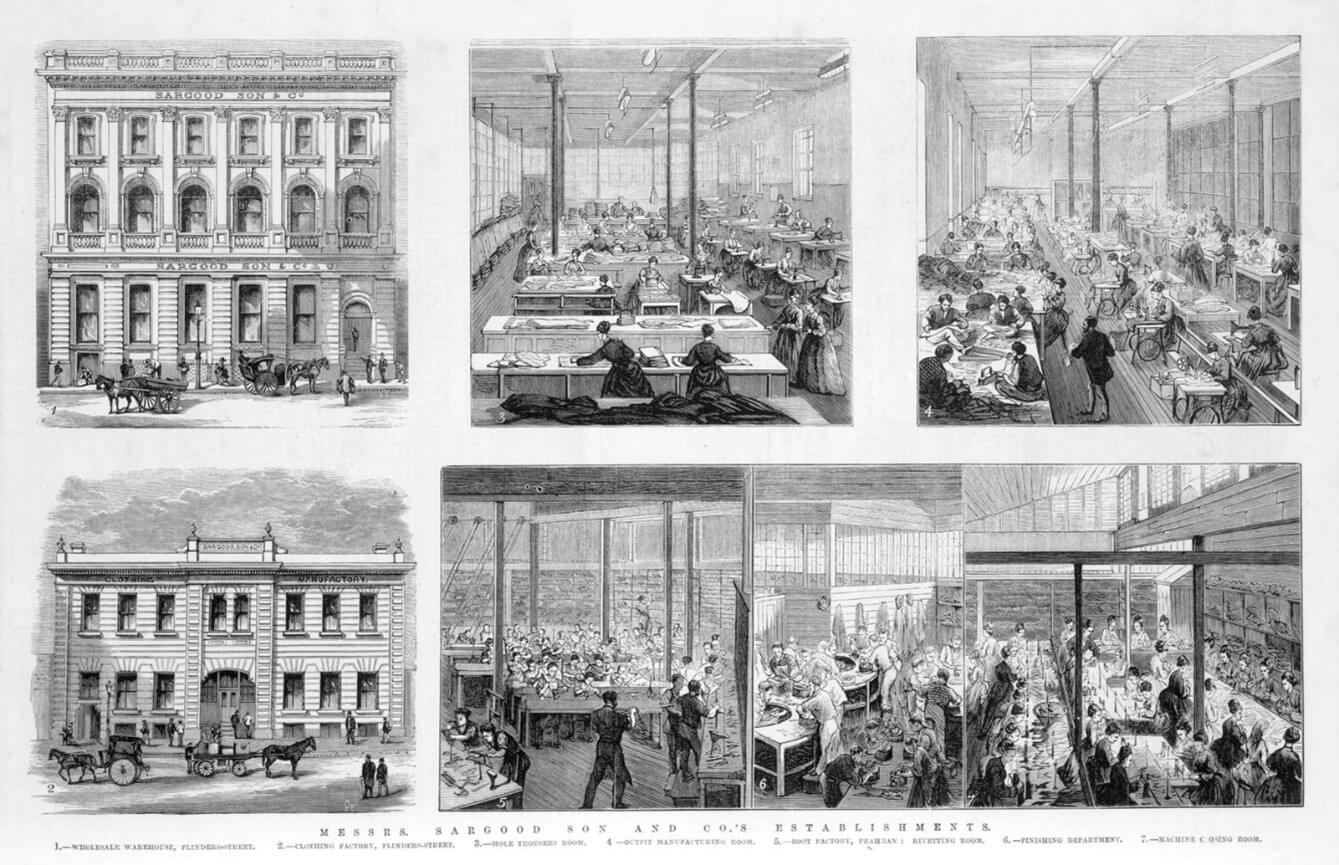From the 1870s a growing movement of concerned citizens sought to improve working conditions in the factories, aiming in particular to limit the working hours and improve the conditions of working women and children. Before the passage of the 1872 Education Act there were many children in factories, some said to be as young as nine. After the Education Act made school attendance compulsory it was more difficult for children to work, but certainly not impossible: evasion of the Act was common practice and parents seem to have colluded with employers to falsify the ages of their children to enable them to work.
From 1873 a series of Acts tried to regulate hours of work and working conditions in Victoria’s factories. The Shops and Factories Act 1873 was the first of these and the first such attempt in an Australian colony. It followed a campaign to regulate the conditions of seamstresses working in dressmaking establishments in Ballarat, after long hours and poor conditions were exposed in the Ballarat Courier. The Courier called on the ‘chivalry’ of members of the local Early Closing Association, who had been successful in reducing shop hours, to take up the cause of the many ‘dressmakers, milliners and tailoresses’, whose hours were often dangerously long, and longer than those of men who worked alongside them.
Heymansons Clothing Factory, Melbourne, 1867
Oswald Rose Campbell artist, Frederick Grosse engraver
Reproduced courtesy State Library Victoria
This engraving was published in the Australian news for home readers by Ebeneezer and David Syme on 20 May 1867. It shows the workroom of a factory in Elizabeth Street. Both men and women are shown in the workroom. The men sitting on the platform to the right are tailors, shown in characteristic pose and sewing by hand by the light of windows. The men shown working at tables on the left of the image seem to be cutting the fabric, using the large cutting shears shown to hand. Tailors were taught all aspects of the tailoring trade. Women however were normally only taught part of the trade and served a shorter apprenticeship. Traditionally they were not taught to cut out and were limited to some of the tasks considered less skilled. These women are shown using machines and hand sewing. Although all women were paid considerably less than men (usually about half the male wage), excluding them from all aspects of the trade also meant that they were not paid as skilled workers. But the clothing industry also saw the first female union, the Tailoresses’ Association of Melbourne, formed in December 1882. It led a successful strike against attempts to reduce piece rates in 1883 and remained a strong force until it amalgamated with the Tailors’ Society in 1906.
Premises, staff and family of W. Davies, Boot and Shoemaker, Castlemaine c. 1860.
Reproduced courtesy State Library Victoria
Although the workers in this shop are all men and boys, the scale of the business is similar to many in the boot trade. Women and girls also worked in this trade in Melbourne workrooms. Small premises like this one were later excluded from the oversight of the Factories Act 1873.
By 1874 it was clear that the Act was ineffective. In October 1874 a long article in the Argus entitled ‘The Factories of Melbourne’, argued that ‘many manufactories in Melbourne were neglecting to comply with the regulations’, citing overcrowded workrooms, poor ventilation, insanitary facilities, and long hours worked by young children.
Messrs Sargood, Son and Co’s establishments, 1874
Reproduced courtesy State Library Victoria
Published in the Illustrated Australian news for home readers, 4 November 1874.
A royal commission held in 1882-4 recommended a system of registration for factories, the appointment of inspectors, limiting youth employment and limits to the hours of all workers. It also made the first of many attempts to limit the employment of outworkers, often called ‘sweated’ workers. Although the resulting Bill was also amended in the Legislative Council, the Factories and Shops Act 1885 did establish a registration system and an inspectorate. It was less successful in suppressing the widespread practice of sweating however.
While the young men of the shop can jauntily walk away to their homes at six and seven o'dock in the evening, their sisters in trade are kept upstairs until nine, ten, eleven, and often up to midnight, working at the sewing machine or plying the needle, in an atmosphere heated to a degree dangerous to health by numbers and gas lights. Their growth and development are stunted by stooping over their work for fifteen and often eighteen hours a day, and their morals are corrupted, by the late hours at which they wend their ways home, and the hard life with which, to their immature minds, they seem to be threatened. (Ballarat Courier, 10 April 1873, p.2)
The reference to the morals of seamstresses reflected debate in both Victoria and Britain at the time, suggesting that the long hours and low wages of seamstresses sometimes tempted girls to move into prostitution instead. It was an emotional appeal, but apparently fell on deaf ears, for the Courier turned next to the parliament, where William Collard Smith (Major Smith), Member for Ballarat West, took up the cause. Smith introduced the Bill that would become the Factories Act.
The Act tried to limit the hours of female workers to eight hours per day, but amendments introduced by the Legislative Council limited its effectiveness by changing the definition of ‘factory’ in the Act to specify workplaces employing 10 workers or more, effectively excluding small workplaces (still the majority) from oversight.



